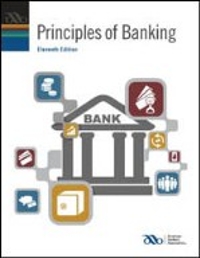Count All P53 CC331201 Basic Valuation Calculations - The APV Perpetuity Company - Interest Is Not Tax Deductible: In this problem, we value the APV Perpetuity Company from Problem 5.2 in an income tax regime in which inter- est expense is not tax deductible. The underlying information for the APV Perpetuity Company appears in Problem 5.2 with the following exceptions-interest is not tax deductible. If you also completed the previous problem for the APV Perpetuity Company, compare your responses for this problem to your responses for Problem 5.2 Value the companythe value of the firm and the value of the equity-as of the end of Year 0 using the APV valuation method. Calculate the company's capital structure ratios as of the end of Year 0. Given the company's capital structure strategy, how will these capital structure ratios vary in the future? Calculate the company's weighted average cost of capital as of the end of Year O. d Value the company-the value of the firm--as of the end of Year O using the WACC valuation method. Value the equity as of the end of Year 0 using the Equity DCF valuation method. -5.2 Basic Valuation Calculations - The APV Perpetuity Company - Interest Is Tax Deductible: The APV Perpetuity Company does not expect to grow. In other words, it expects its cash flows to remain constant and it expects to distribute all equity free cash flows to the equityholders in the form of dividends and not hold any excess cash. The company is expected to generate an unlevered free cash flow of $3.000 per year in perpetuity. The company is initially financed with $10,000 equity, S12.000 debt. and 58,000 preferred stock. The com- pany's income tax rate on all income statement items is 40%, and interest is tax deductible. The company does not intend to change the amount of financing it has currently. The company's interest rate, which is equal to its debt cost of capital is 8%. The company's preferred stock dividend rate (paid on the book value of preferred stock), which is equal to the cost of capital of preferred stock, is 9%. The company's unlevered cost of capital is 10%. The appropriate discount rate for interest tax shields is the unlevered cost of capital for this company. Value the company--the value of the fim and the value of the equity-us of the end of Year O using the APV valuation method. b. Calculate the company's capital structure ratios as of the end of Year 0. Given the company's capital Structure strategy, how will these capital structure ratios vary in the future? Calculate the company's weighted average cost of capital as of the end of Year 0. Value the company--the value of the fim-15 of the end of Year O using the WACC valuation method. Value the equity as of the end of Year O using the Equity DCF valuation method. Count All P53 CC331201 Basic Valuation Calculations - The APV Perpetuity Company - Interest Is Not Tax Deductible: In this problem, we value the APV Perpetuity Company from Problem 5.2 in an income tax regime in which inter- est expense is not tax deductible. The underlying information for the APV Perpetuity Company appears in Problem 5.2 with the following exceptions-interest is not tax deductible. If you also completed the previous problem for the APV Perpetuity Company, compare your responses for this problem to your responses for Problem 5.2 Value the companythe value of the firm and the value of the equity-as of the end of Year 0 using the APV valuation method. Calculate the company's capital structure ratios as of the end of Year 0. Given the company's capital structure strategy, how will these capital structure ratios vary in the future? Calculate the company's weighted average cost of capital as of the end of Year O. d Value the company-the value of the firm--as of the end of Year O using the WACC valuation method. Value the equity as of the end of Year 0 using the Equity DCF valuation method. -5.2 Basic Valuation Calculations - The APV Perpetuity Company - Interest Is Tax Deductible: The APV Perpetuity Company does not expect to grow. In other words, it expects its cash flows to remain constant and it expects to distribute all equity free cash flows to the equityholders in the form of dividends and not hold any excess cash. The company is expected to generate an unlevered free cash flow of $3.000 per year in perpetuity. The company is initially financed with $10,000 equity, S12.000 debt. and 58,000 preferred stock. The com- pany's income tax rate on all income statement items is 40%, and interest is tax deductible. The company does not intend to change the amount of financing it has currently. The company's interest rate, which is equal to its debt cost of capital is 8%. The company's preferred stock dividend rate (paid on the book value of preferred stock), which is equal to the cost of capital of preferred stock, is 9%. The company's unlevered cost of capital is 10%. The appropriate discount rate for interest tax shields is the unlevered cost of capital for this company. Value the company--the value of the fim and the value of the equity-us of the end of Year O using the APV valuation method. b. Calculate the company's capital structure ratios as of the end of Year 0. Given the company's capital Structure strategy, how will these capital structure ratios vary in the future? Calculate the company's weighted average cost of capital as of the end of Year 0. Value the company--the value of the fim-15 of the end of Year O using the WACC valuation method. Value the equity as of the end of Year O using the Equity DCF valuation method








